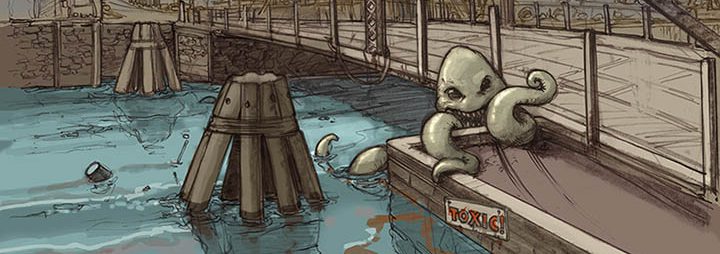On Thursday, we received a visit from guest lecturer and author of “Gowanus: Brooklyn’s Curious Canal,” Joseph Alexiou. He debriefed is on the history of the Gowanus: where it came from, who built it, why is it there, what is being done right now to eliminate the contamination, etc. While it was very informative, I still struggled to keep up with all the information a bit. There are still many things that I am still confused about. However, I will discuss a few things that stuck and intrigued me.
He first introduced the Gowanus as a 1.8 mile long industrial body of water located in New Amsterdam. It was interesting to learn about Brooklyn in the past years as far as the evolution of boroughs/towns and how the Dutch made claim to this area. The Dutch used the creek as a source of transportation for boats carrying different materials. During the height of its use, the Dutch would use mill ponds to collect water during flooding. These mill ponds had houses and when water from rain fall collected, the wheel would turn and grains, peas, etc. would be grounded. I found it interesting how even back then, in a time of very little advancement, the Dutch settlers were able to adjust to an unavoidable situation and use it to their advantage.
The issue of flooding gives light to the attributes of the Gowanus from the past that still exists today. We discussed how the sloping roads/terrain in the area was a primary cause of flooding because the rain would run down to this central point. Such sloping is still evident in the Park Slope and the Gowanus area now. Also, the reconstruction of the Old Stone House of Gowanus (first strong building structure in NY), which uses some of the original material, is present in the middle of the park on 4th Avenue between 3rd and 4th street today.
I also feel like the lecture really helped us to understand just how polluted the canal really is. You hear the term “pollution” and you instantly think GARBAGE: plastic bags and styrofoam cups. But we really got in depth about what pollutants are actually contaminating the canal. The canal houses industrial waste going as far back as the time of the Dutch settlement from sources such as ink factories, paint factories, coal yards, sewage, etc. The Gowanus Canal has years worth of sediment layers containing fecal coliform, heavy metal, toxic waste, NAPL, etc. There are are so many layers that it appears as though the best solution, rather than digging it up, would be to cover it. I thought that was INSANE.



